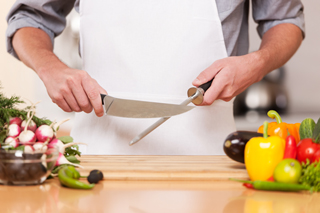
If you’re into cooking, you probably already know that many good knives are essential to any kitchen. But which one should you choose? Which material is the best? Is it really necessary to choose expensive ones? How do you recognize a good quality one?
First: Knife glossary! Just a few basics regarding the parts of a knife.
There is eight parts to a knife:
There are six materials used for blades: high-carbon steel, high carbon stainless steel, stainless steel, titanium, ceramic and plastic. They do not require the same maintenance, nor do they have the same use.
The most popular material used for high quality kitchen knives is high-carbon stainless steel; it is a combination of the best qualities of stainless steel and high-carbon steel. High-carbon steel can be very sharp, tough and sharpens easily, but can break under stress. It will also discolor when put in contact with acid food. Stainless is very resistant to rusting or discoloring. When it comes to titanium, it is lighter than steel, corrosion and wear-resistant, easy to sharpen and holds its edge for longer than steel ones. The ceramic blades are the ones that hold their edge the longest, though they have to be sharpened by a professional with a diamond sharpener. As for plastic, they are meant to prevent food discoloring from the blade of a knife. Usually these require more force when used since they are not very sharp.
Now that you know what good quality knives are made of, you want to make sure to have a good quality wooden cutting board to preserve the sharpness of its blade. Since it offers less resistance to the edge, wood is knife-edge friendly compared to plastic, metal or ceramic kitchen cutting boards. Have a look at our selection by clicking here.